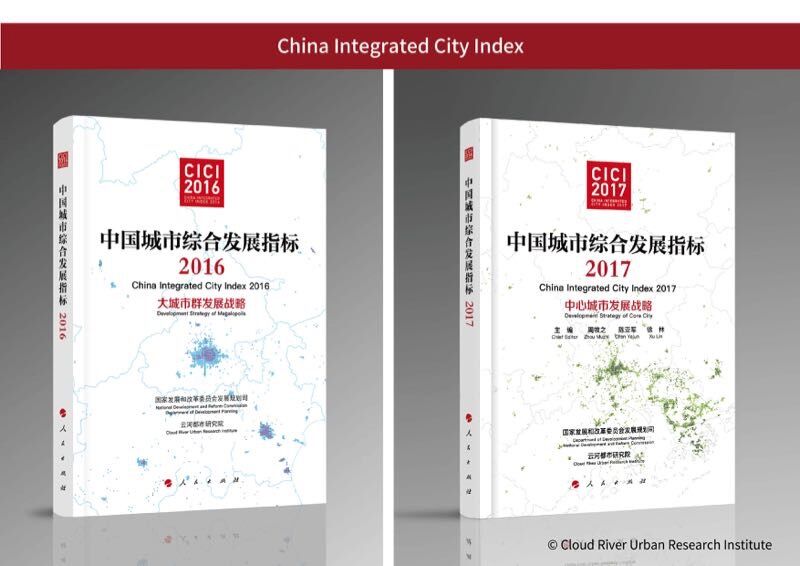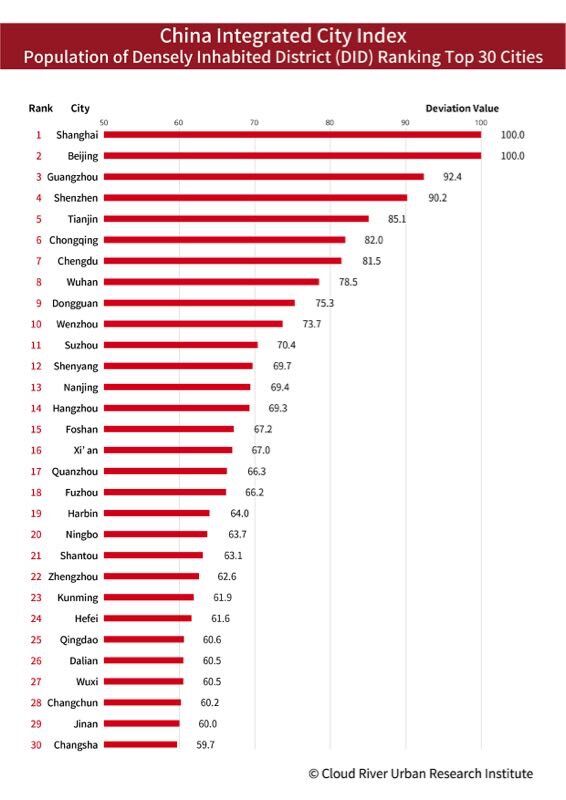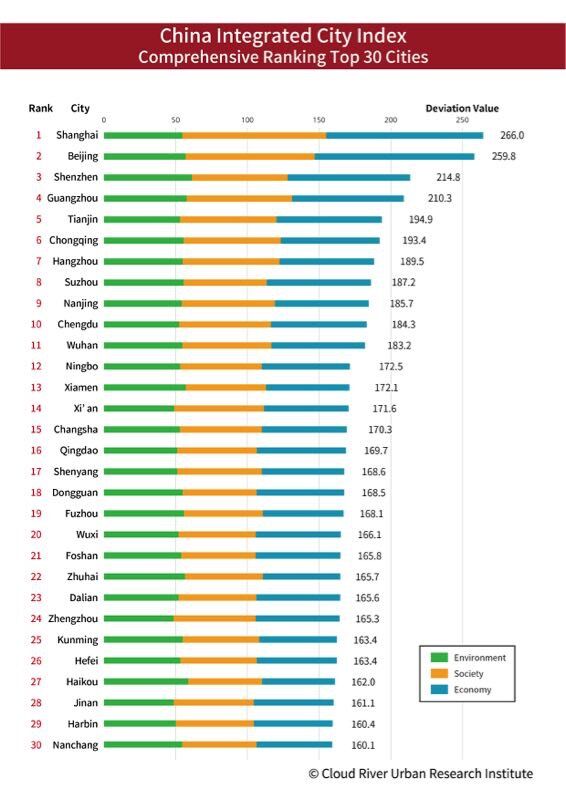Expert: Managing dense population to urban development
- By He Shan
 0 Comment(s)
0 Comment(s) Print
Print E-mail China.org.cn, April 19, 2018
E-mail China.org.cn, April 19, 2018
A recently released report, "China Integrated City Index," highlights that the concept of Densely Inhabited Districts is essential to promoting a city's quality development, and is the foundation of the development of modern cities.

Zhou Muzhi, a professor of economics at Tokyo Keizai University and head of the Cloud River Urban Research Institute, is a compiler of the index. He said that the core of a city's development comes down to the composition and activities of its population.
"In other words, cities need to rely on the aggregation of population to drive the development of the service industry and the knowledge economy, so that various functions can be interwoven together to form a good superposition effect and improve overall efficiency," Zhou said.
"Only through the agglomeration of people, can the city continuously strengthen its scale effect, economic efficiency and economic potential," he added.
Zhou said the index introduces the concept of DID — areas with population densities above 5,000 people per square kilometer.

According to the report, the total area and population density of a city's DIDs directly correlates with its capacity to attract talent, industries, and resources.
Zhou said that over the past 20 years, Chinese cities blindly pursued GDP growth, resulting in chaos. He said that the index is based on comprehensive analysis, taking the environment, society and economy into account.
The index, jointly compiled by the National Development and Reform Commission and the Cloud River Urban Research Institute, used data collected via surveys, satellite and the internet to evaluate 297 Chinese cities.
Zhou said the index aims to help cities make smarter decisions by examining world development patterns and looking at city development mechanisms in a global perspective.
The first version of the annual index was released in 2017. This year, the index continues to use a "3×3×3" structure, with three major indicators (environment, society and economy), each containing three sub-indicators, which in turn comprise another three minor indicators.
The number of specific indicators included in this year's index increased from 133 to 175, and the index pays more attention to cities' ecological resources, as well as air pollution measurements.
A feature report titled "Development Strategy of Core City" based on the index, was released this year.
The featured report found that between 1980 and 2015 as many as 92 cities around the world saw their urban population grow by more than 2.5 million. Thirty of these cities are located in China, and they contribute to around 40 percent of the country's GDP. The 30 cities also export 67 percent of its goods, take in 60 percent of inbound tourists, receive 56 percent of patent grants, and are the base of 66 percent of the country's companies listed on the main bourse. The report concludes that these cities are the spearhead for the development of China's economy since its reform and opening up.
"China's rapid urbanization, and the development of big cities as well as mega cities, synchronize with the global trend of development," Zhou said.
According to the report, developing and strengthening the functions, advantages and capacities of core cities is the key part of the competition.
In this regard, how to correctly evaluate, cultivate and strengthen the central functions of cities becomes an important national strategy to emerge ahead of the competition.

Over the past 40 years, since the reform and opening up, China has experienced the fastest urbanization in the world's history, but many problems emerged in the process, undermining the quality of the Chinese urbanization and city development.
Zhou said China's urbanization was not easy sailing, as it also saw decades of counter-urbanization, and then a period of diverging strategies from the central government.
In the 1980s, the central government set forth the construction of small towns as a national policy, setting the direction of urbanization through small - and medium-sized town.
Looking back, Zhou said, the policy proved to be a failure, which caused environmental pollution in rural areas and led to the collapse of rural traditions.
When China implemented its 11th Five-Year Plan in 2006, the development strategy shifted to urbanization led by its major cities.
Zhou considered the move as a victory, but stopped short of hailing it as a complete solution to China's urbanization.
"We still have too many institutional and policy restrains on urbanization," he said. "The most typical is the hukou system and the land system."
The top 30 cities on the index account for 40.6 percent of DID population. They also account for 40 percent of the total national GDP and house 89.7 percent of the Chinese companies listed in the world's top 500, 67.2 percent of companies listed on the main bourse in the country, 85.5 percent of the "new third board" listed companies in the country, and receive 80.7 percent of imports. This data shows that the top 30 cities have strong DID and lead the development of China's economy.
Zhou pointed out many people attribute traffic congestion, environmental pollution and daily inconveniences to population density, but he argues that the real culprit lies in the lack of effective governance.
The report raises Tokyo's metropolitan area as an example: Around 1950, the area had a population of more than 10 million, and faced the same challenges as Beijing and Shanghai today, such as pollution, traffic congestion, housing insufficiency and inadequate infrastructure. Tokyo took a series of measures to curb population growth and industrial development in the area. Today, the population of the Japanese capital is close to 40 million, but the "big city diseases" are mostly eradicated.
The reason, according to the report, was that the capacity of the area has been remarkably enhanced through improving the level of infrastructure and management.
In stark contrast, many megacities around the world, such as Sao Paulo in Brazil and Mumbai in India, are facing serious problems, including slums.
"We see that the same large population has produced very different results because of different levels of intelligence required for urban development and governance," Zhou said.
The professor said that for big cities such as Beijing and Shanghai, curbing the population is a convenient strategy, but only by improving urban infrastructure and governance can a city really cure big city diseases.
515a302c-583a-40b9-b650-c39cfd4245ad.jpg)




Go to Forum >>0 Comment(s)